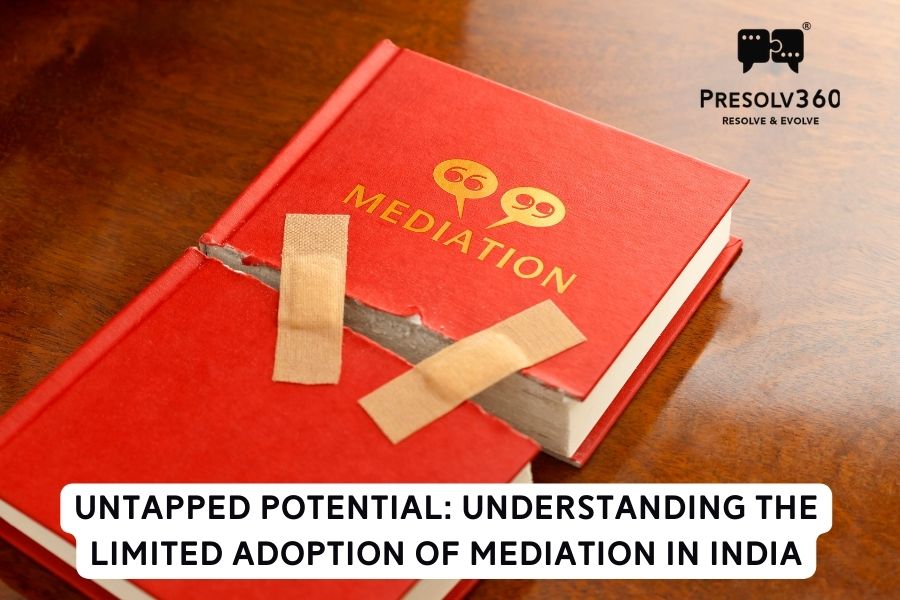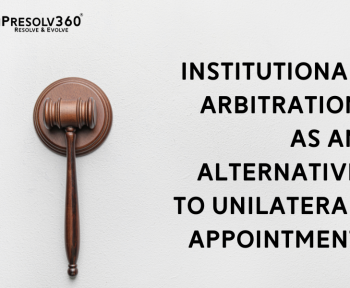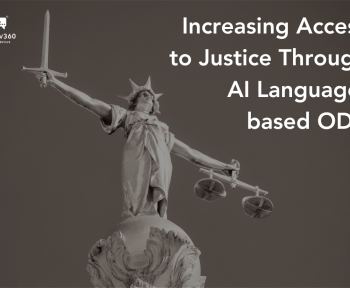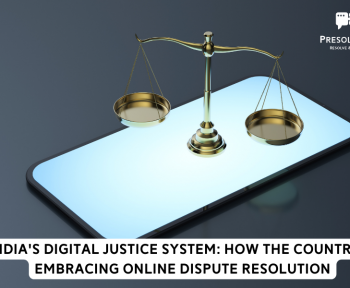Mediation offers efficient and amicable conflict resolution as an alternative to lengthy court proceedings. It involves a neutral mediator who assists parties in engaging in constructive dialogue and finding mutually agreeable solutions. Despite its effectiveness globally, mediation hasn’t been widely embraced in India, thanks to certain cultural and institutional factors.
India’s rich history includes traditional dispute-resolution mechanisms like panchayats and community elders. However, the dominance of litigation in the Indian legal system has entrenched a culture favouring formal court processes. Despite legislative frameworks and growing interest in alternative dispute resolution, mediation isn’t widely used in India. This blog explores the efficiency, benefits, and cultural factors that hinder its adoption in the Indian context.
Efficiency of Mediation
Certain aspects of mediation make it a very effective dispute-resolution mechanism, particularly in a litigious country like India:
Flexible and Customizable Process
One of the key advantages of mediation is its flexibility in adapting to the unique needs and circumstances of each case. Unlike court proceedings, which follow rigid procedures, mediation allows parties to customize the process according to their preferences. This flexibility enables parties to focus on the specific issues at hand and explore creative solutions that may not be available through litigation. The ability to tailor the process contributes to efficiency by streamlining discussions and negotiations toward reaching a mutually agreeable resolution.
Preserving Relationships
Mediation emphasizes the relationship between parties, particularly important in ongoing business partnerships, family disputes, or community conflicts. By promoting open communication, active listening, and respect for each party’s perspective, mediation fosters an atmosphere conducive to understanding and collaboration. This focus on relationship preservation can lead to more efficient resolutions as parties are motivated to find mutually satisfactory outcomes, rather than engaging in protracted legal battles that may strain or destroy relationships.
Enhanced Communication and Understanding
Mediation facilitates effective communication between parties, allowing them to express concerns, interests, and needs in a controlled environment. A trained mediator promotes active listening and empathetic communication, leading to a deeper understanding of perspectives and motivations. This enhanced communication reduces misunderstandings, clarifies issues, and enables creative problem-solving.
Greater Control and Ownership of the Outcome
Unlike court litigation where decisions are imposed by a judge, mediation empowers parties to actively participate in the resolution process and craft their own solutions. This sense of control and ownership over the outcome promotes efficiency as parties are more likely to comply with agreements they have played a role in shaping. Mediated settlements are generally perceived as fairer and more satisfactory to the parties involved, which reduces the likelihood of further disputes or appeals, ultimately saving time and resources.
Time and Cost Savings
Mediation saves time and costs compared to litigation. With a shorter duration, often just a few days, mediation expedites the path to settlement. This swift resolution reduces the time and expenses associated with legal proceedings for all parties involved.
Reduces Emotional Toll
Litigation can be emotionally draining and stressful for the parties, often leading to increased animosity and strained relationships. In contrast, mediation provides a supportive and less adversarial environment, which helps alleviate the emotional toll associated with legal battles. The focus on collaboration, empathy, and problem-solving in mediation contributes to a more positive and less stressful experience for the parties. By reducing emotional barriers and facilitating constructive dialogue, mediation promotes efficiency in reaching resolutions that prioritize the interests and well-being of all parties involved.

Reasons for Limited Adoption of Mediation in India
Despite the above-mentioned advantages, India has been slow to adopt mediation as a dispute resolution mechanism, due to a range of factors:
Lack of Trust in Mediation
In India, trust in the mediation process is lacking due to concerns about mediator neutrality, competence, and enforceability of agreements. This scepticism arises from a reliance on traditional dispute-resolution methods. Building trust requires educating the public about mediator qualifications and ethical standards, ensuring transparency, and showcasing successful case outcomes.
Adversarial Legal Culture
India has a predominantly adversarial legal culture, with a focus on winning or losing in court. This culture tends to promote a confrontational approach to dispute resolution rather than a cooperative one. Mediation, on the other hand, emphasizes collaboration and finding mutually beneficial solutions. Shifting the mindset from an adversarial approach to a problem-solving approach is crucial for the wider acceptance of mediation.
Limited Role of Lawyers
Lawyers in India play a significant role in dispute resolution, and their involvement is considered crucial. However, some lawyers may perceive mediation as a threat to their practice and income. Educating lawyers about mediation’s benefits and emphasizing their role as facilitators can help overcome this resistance.
Lack of Mediation Skills and Training
The effective practice of mediation requires skills and training. However, there is a scarcity of trained and qualified mediators in India. Mediators need to possess strong communication, negotiation, and conflict-resolution skills. Training programmes and certification courses should be promoted to equip individuals with the necessary mediation skills, thereby enhancing the credibility and effectiveness of the mediation process.
Preference for Judicial Resolution
In India, there is a strong preference for judicial resolution due to the belief that court decisions provide justice and finality. This preference overshadows the benefits of mediation, such as relationship preservation and active participation. Raising awareness about mediation’s advantages can help change this mindset.
Socioeconomic Factors
Socioeconomic factors also contribute to the limited adoption of mediation in India. Mediation is typically associated with commercial disputes, and its application in other areas, such as family disputes or community conflicts, is relatively less prevalent. Lack of awareness and accessibility to mediation services in rural areas and among marginalized communities further hinders its wider adoption. Efforts should be made to make mediation accessible and affordable to all segments of society, including providing support for low-income individuals and establishing mediation centres in underserved areas.
Conclusion
The limited adoption of mediation in India is influenced by a complex interplay of cultural, institutional, and societal factors. Challenges such as cultural preferences for authoritative decision-making, an adversarial legal culture, limited awareness and understanding, and a lack of trust in the mediation process contribute to its slow uptake. Overburdened courts, limited lawyer involvement, and the need for improved mediation skills further impede its widespread use.
To promote a culture of mediation in India, a multifaceted approach is needed. This includes awareness campaigns, educational initiatives, institutional support, capacity building for mediators, and legal reforms to integrate mediation into the existing framework. By addressing these challenges and promoting the benefits of mediation, India can harness its potential for effective dispute resolution. Embracing mediation as a viable option will alleviate the burden on courts and contribute to more harmonious and sustainable resolutions, fostering a just and inclusive society.




